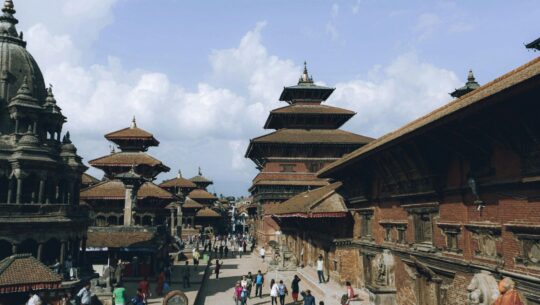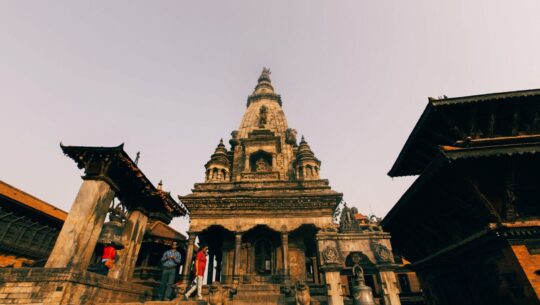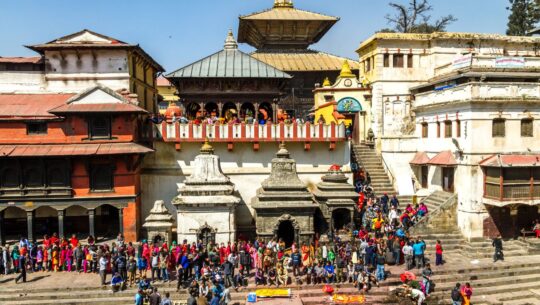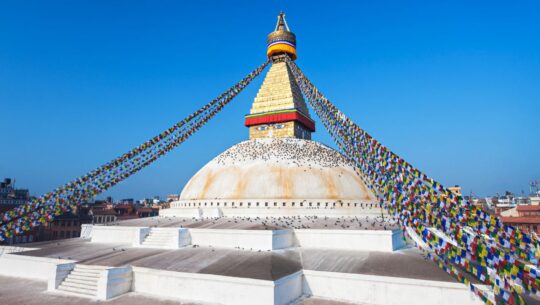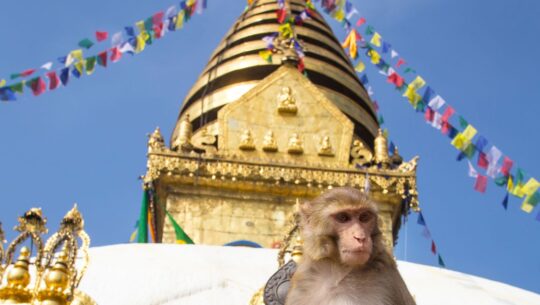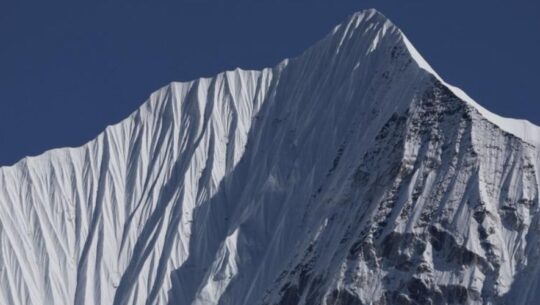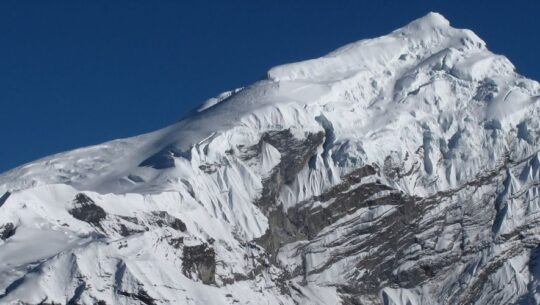Kathmandu City Cultural Tour | One Day Package 2025/26
TripAdvisor Reviews Recommended by 99.99% travelers
USD 70
Nepal
1 Day
Easy
1,414m (4,639 ft) at Swoyambhu Nath
Not Included
private vehicle
1-50
Sept, Mar, Apri, May, & Feb
- Kathmandu city cultural tour allows you to visit the palace, the living goddess, cremations, and one of Asia’s largest stupas.
- Start at dawn from Thamel; walk to Basantapur and watch Kathmandu awaken with prayers, shutters, and Gwarmari.
- Basantapur’s Kasthamandap reconstruction showcases ancient joinery, and Kumari Ghar reveals Nepal’s Living Goddess tradition respectfully today.
- Pashupatinath’s riverbank ghats confront life’s impermanence, and open-air cremations show Hindu philosophy with solemn honesty, and ancient rituals endure.
- Boudhanath surrounds you with peaceful kora, prayer wheels, butter lamps, and authentic Tibetan cuisine nearby.
- Swayambhunath’s 365 steps lead to majestic valley views and harmonious Hindu-Buddhist worship, sharing sacred space.
- This Route balances walking and private ride, which maximises depth without fatigue in six to seven hours.
- The package includes an English-speaking local guide, bottled water, and private inter-site transportation throughout the day.
- Visit during Indra Jatra, Buddha Jayanti, or Losar for festival energy for the best experience.
- Dressing modestly, respecting rituals, asking before photos, clockwise circumambulation in temples and following temple etiquette helps you to get authentic experiences.
Kathmandu City Cultural Tour | One Day Package 2025/26 Brief Insight
What if we tell you that in a day, you could visit a 300-year-old palace, watch the one and only living goddess, witness the sacred Hindu cremation, and end the day in one of Asia’s largest stupas.
Sound impossible for a single day? That’s exactly what the Kathmandu city cultural tour delivers.
Our guide has been using this route for more than a decade, yet they still get chills when they see first-timers react to the cultural experiences packed in mere 6 to 7 hours.
In fact, the tour hits Basantapur Durbar Square (the medieval heart of Kathmandu), Pashupatinath Temple (one of Hinduism’s holiest sites), Boudhanath Stupa (the Tibetan Buddhist epicentre outside Tibet), and Swayambhunath (the 2,000-year-old Monkey Temple). Each one represents a different slice of Nepal’s soul.
Now, what makes Kathmandu special for cultural tourism? Well, 7 out of Nepal’s 10 UNESCO sites exist inside this valley, which in itself is fascinating.
But that’s not the coolest part; the real magic is how Hindu temples stand next to Buddhist stupas. Ancient kings’ palaces face modern internet cafés. Sacred cremation grounds operate beside wedding celebrations. The city doesn’t preserve its culture in museums. It lives it.
To give everyone the full experience, we have decided to mix in the tour with a cultural heritage walk and a private ride. In fact, our morning starts with a 20-minute walk from Thamel to Basantapur.
Then we use a private car to cover the longer distances between major sites. You get street-level immersion without destroying your knees.
Your package includes an English-speaking guide (someone who actually grew up here, not a script reader), bottled water, and private transportation between locations.
Lunch isn’t included because the best part is choosing where to eat based on what you’re craving when we reach Boudhanath. The area has everything from rooftop Tibetan restaurants to hidden Newari joints.
Physical fitness? If you can walk around a shopping mall for an hour, you can handle this tour. The only real climb is Swayambhunath’s 365 steps, and there’s a vehicle option from the back entrance if stairs aren’t your thing.
Don’t worry! We have taken everyone from adventurous 75-year-olds to curious 10-year-olds. The pace is relaxed. We stop when something interesting catches your eye.
By the time we finish, you’ll understand why locals joke that Kathmandu has more festivals than days in the year and more temples than houses.
Besides that, you’ll be seeing the traditions that haven’t changed in centuries, walk the paths that many pilgrims walked in, and probably collect a few monkey stories to tell back home.
- Detailed Itinerary
Detailed Itinerary
Detailed Itinerary
Trek Distance :
22 km
Highest Altitude :
1,414m (4,639 ft) at Swoyambhu Nath
Trek Duration :
8 to 9 hours
Meals :
N/A
7:00 AM – 8:00 AM: Walking from Thamel to Basantapur Durbar Square
We meet at your Thamel hotel around 7 AM. Yeah, it’s early. But here’s what most tourists miss: Kathmandu at dawn is a completely different city. The chaos hasn’t started yet. In fact it is during this time that you can witness how the city comes to life by watching shopkeepers rolling metal shutters and old women sweeping their doorsteps.
Besides that, you can also start the day with the Newari breakfast delicacy known as Gwarmari, fried dough made up of flour, sugar and ghee.
The walk to Basantapur covers roughly 1 kilometre and takes about 20 minutes, but we’re not speed-walking.
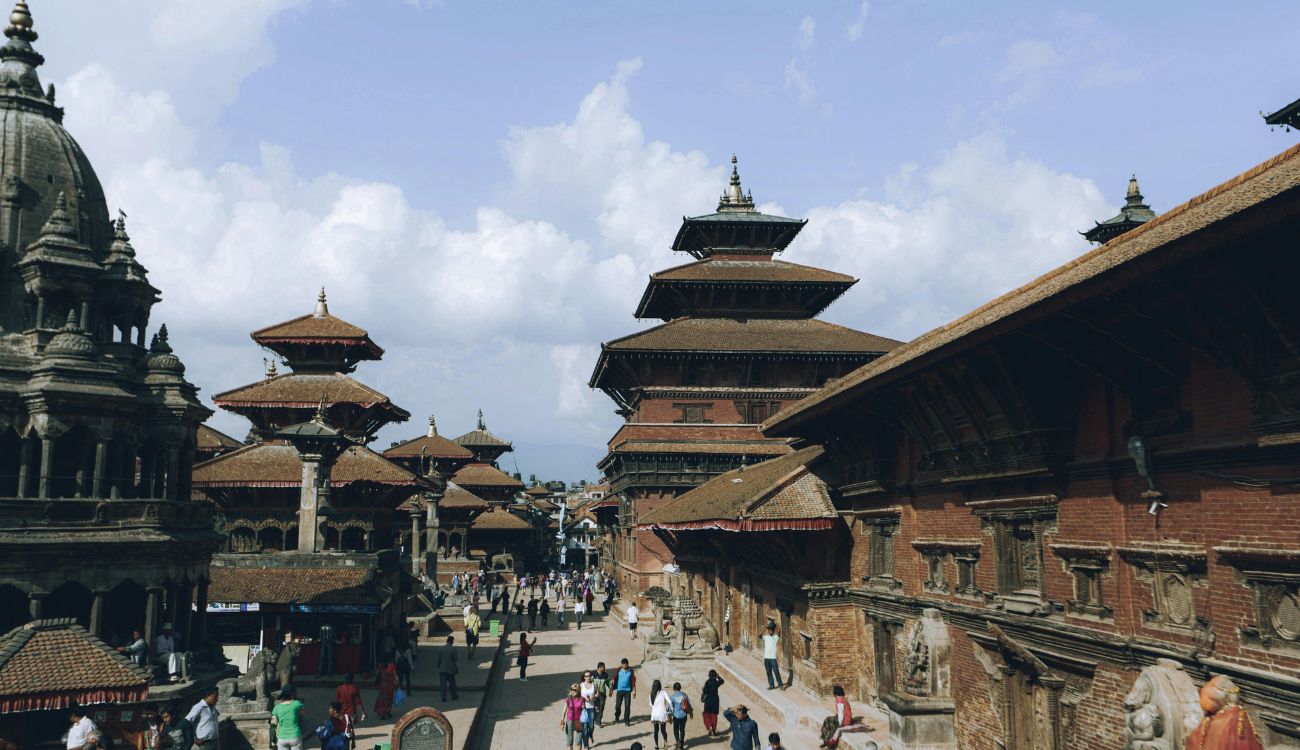
Every 15 to 20 steps, you will find locals offering their morning prayers with fresh marigold garlands at local temples. The most popular one of the lot is the Sweta Kali Temple.
The route then cuts through Freak Street (locally called Jhochhen Tole). Back in the 1960s and 70s, this was ground zero for the hippie trail. The Beatles didn’t make it here, but pretty much everyone else did.
As we get closer to Basantapur, the street widens, and soon you’ll be surrounded by all the ancient temples.
8:00 AM – 9:00 AM: Exploring Basantapur Durbar Square
Stepping into the Basantapur Durbar Square is like entering a time capsule set in the early 1650s. Surrounded by Pagoda temples that are guarded by stone lions.
In fact, this was the beating heart of the Kathmandu kingdom, where kings held court and major decisions got made.
As you move ahead, you will first notice the three-story Kasthamandap being rebuilt. This wooden building is what gave Kathmandu its name.
According to legend, the whole structure came from a single sal tree dating back to the 7th century.
But sadly, the 2015 earthquake flattened it. However, watching the reconstruction is fascinating because they’re using the same ancient techniques, the same joints and joinery, not a single metal nail.
Then there’s Kumari Ghar, home of the Living Goddess of Nepal. The living symbol of Goddess Taleju only appears before the public on special ceremonies like Indra Jatra.
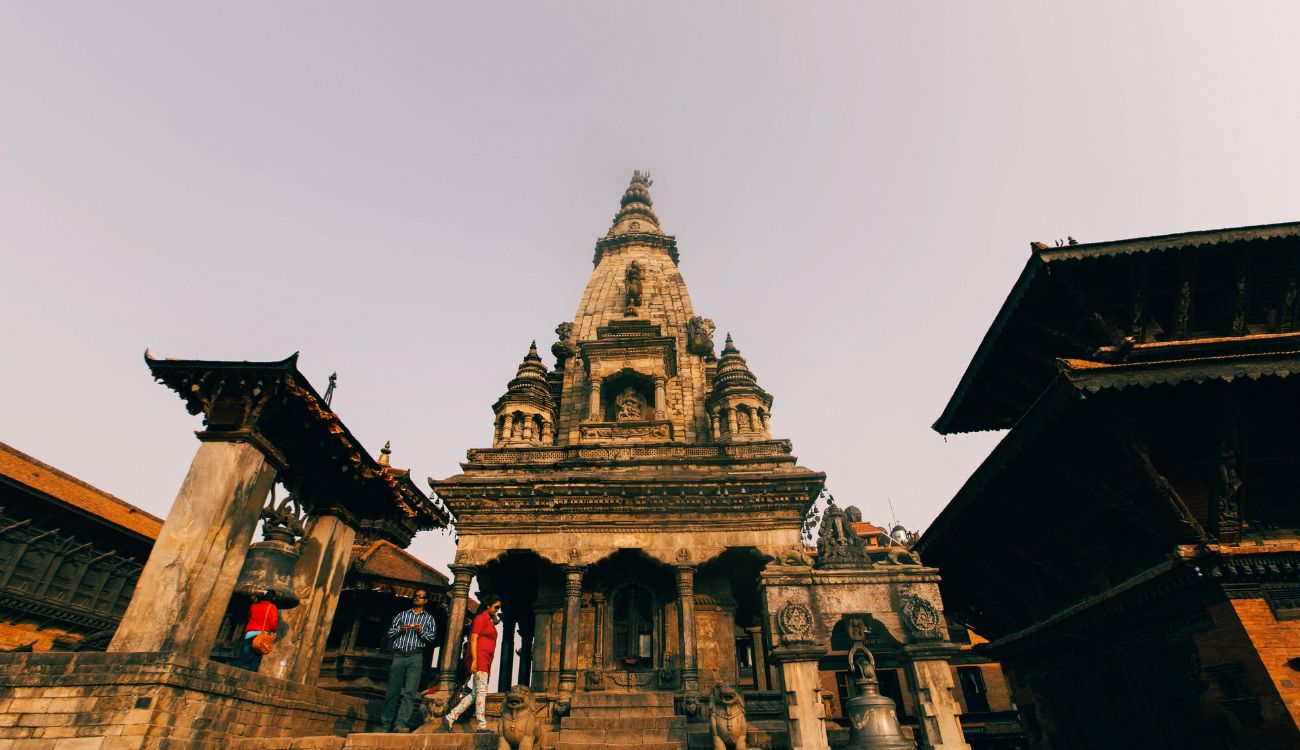
If we’re lucky, we can catch a glimpse of her when she appears at her window (which is very rare). But no cameras. This isn’t a photo opportunity. It’s sacred.
Then, at the northern complex, you will find the Hanuman Dhoka Palace. The statue of the monkey god, whose face is decorated with red sindoor, guards this palace.
Inside, the courtyards reveal where royalty actually lived. Museums hold old weapons and royal regalia.
Besides that, there is also the Taleju Temple looking over everything and off-limits to anyone except the designated priest. In fact, even the locals can visit this temple during the ninth day of the national festival, Dashain.
While wandering around, you will find that the wooden struts of many temples in this area are carved with erotic figures (they represent the tantric unity of male and female energies). Additionally, you will also see tiny Newari script inscription, which basically keeps the record of who built these engineering marvels and when.
If you ask us, the mathematical precision of these pagoda roofs still amazes us. We still wonder how they achieved it without modern engineering methods.
9:00 AM – 10:00 AM: Ride to Pashupatinath Temple
Around 9 AM, your private ride will take you to Pashupatinath.
This whole drive covers about 5 kilometres and takes 15-20 minutes, depending on traffic. We’ll pass through the Ring Road, dodge motorcycles and microbuses.
While passing through the Bagmati River, you’ll start seeing sadhus (Hindu monks) walking toward the temple. These holy men have renounced material life to pursue spiritual goals. But beware, only a few of them are genuine, and others are just performative.
Either way, they’re part of the Pashupatinath with their orange robes, matted dreadlocks, and ash-covered skin.
10:00 AM – 11:00 AM: Pashupatinath Temple Experience
Entering the sacred ground of Pashupatinath changes the mood immediately. Most of the travellers are amazed by how this Shiva temple brings peace to their restless hearts.
The main temple sits on the eastern bank of the Bagmati River, with a roof decorated by gold. However, non-Hindus are prohibited from entering the main temple, but honestly, the real experience happens outside anyway.
The temple complex covers 246 hectares with 518 smaller temples scattered all around the place.
While visiting the smaller temples, we’ll walk along the eastern riverbank where the Arya Ghats (cremation platforms) line up in a row. Yes, open-air cremations.
The views of the body placed in wooden logs wrapped in cloth, while the family chants some mantra, throws some travellers off.
But here’s the thing: this isn’t gruesome. It’s life. Death is treated as a natural transition, not something to hide away in funeral homes. The Bagmati River is sacred because it eventually flows into the Ganges.
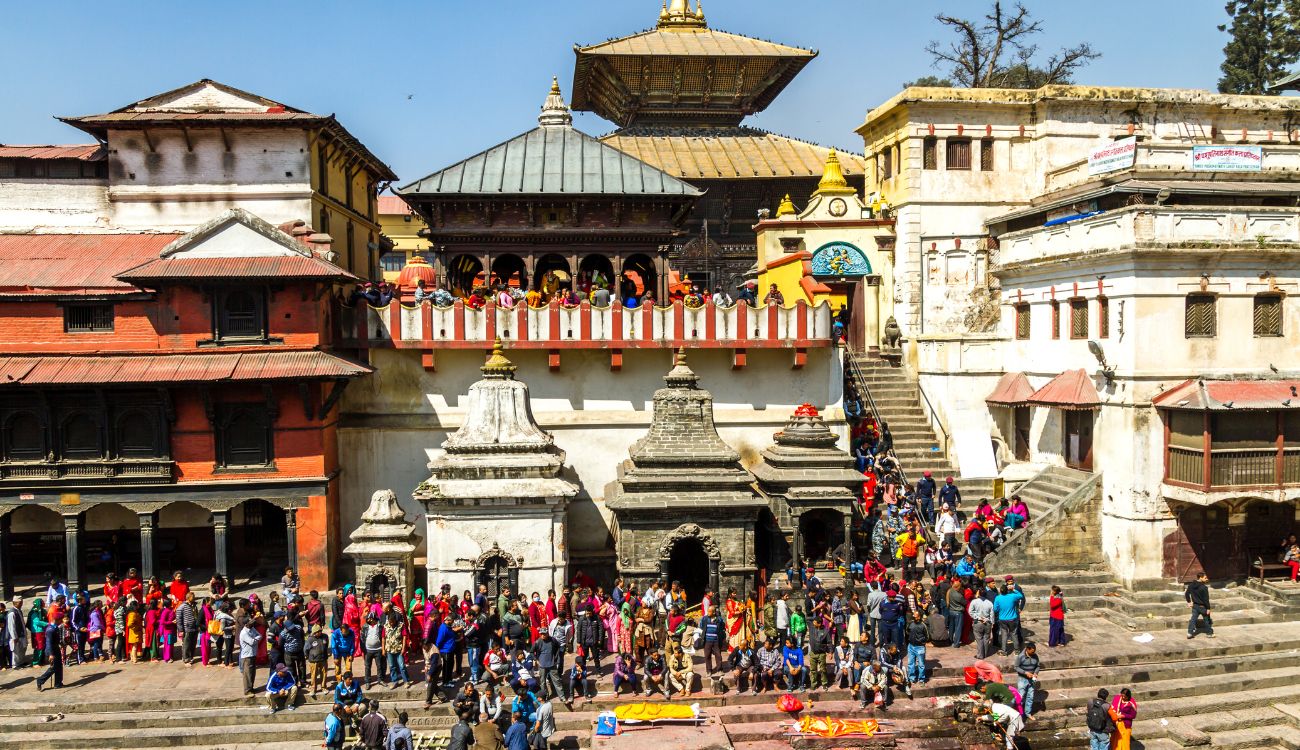
Additionally, It is believed that having your ashes scattered in the Bagmati River flowing through this sacred place is spiritually significant.
Around the ghats, elderly people sit on stone steps, just watching. Some are contemplating their own mortality. Others come daily because being near death reminds them to value life. It’s heavy stuff, but it’s honest in a way Western culture often isn’t.
Apart from that, if we time it right (usually evening works better, but sometimes morning ceremonies happen), we might catch the Bagmati Aarti. Three priests in traditional dress perform synchronised rituals with these massive lamp structures, holding 54 oil lamps each.
11:00 AM – 12:00 PM: Drive to Boudhanath Stupa
From Pashupatinath, Boudhanath is ridiculously close, just a five-minute drive. But if the weather’s decent and you’re not exhausted, you can opt for a 30-minute walk as well.
During the drive, you will see the transition from Hindu Pashupatinath to Buddhist Boudhanath happen street by street.
12:00 PM – 1:00 PM: Boudhanath Stupa and Circumambulation
Built around the 5th or 6th century, Boudhanath Stupa is one of the largest stupas in the world. And honestly, the stupa topped with Buddha eyes seen watching over Kathmandu is the most photographed monument of the city.
After reaching a sacred place, the first thing we do is join the kora, walking clockwise around the stupa’s base. During the process, you will be joining everyone from elderly Tibetan women spinning prayer wheels to young monks to Western converts, all walking together in this continuous loop.
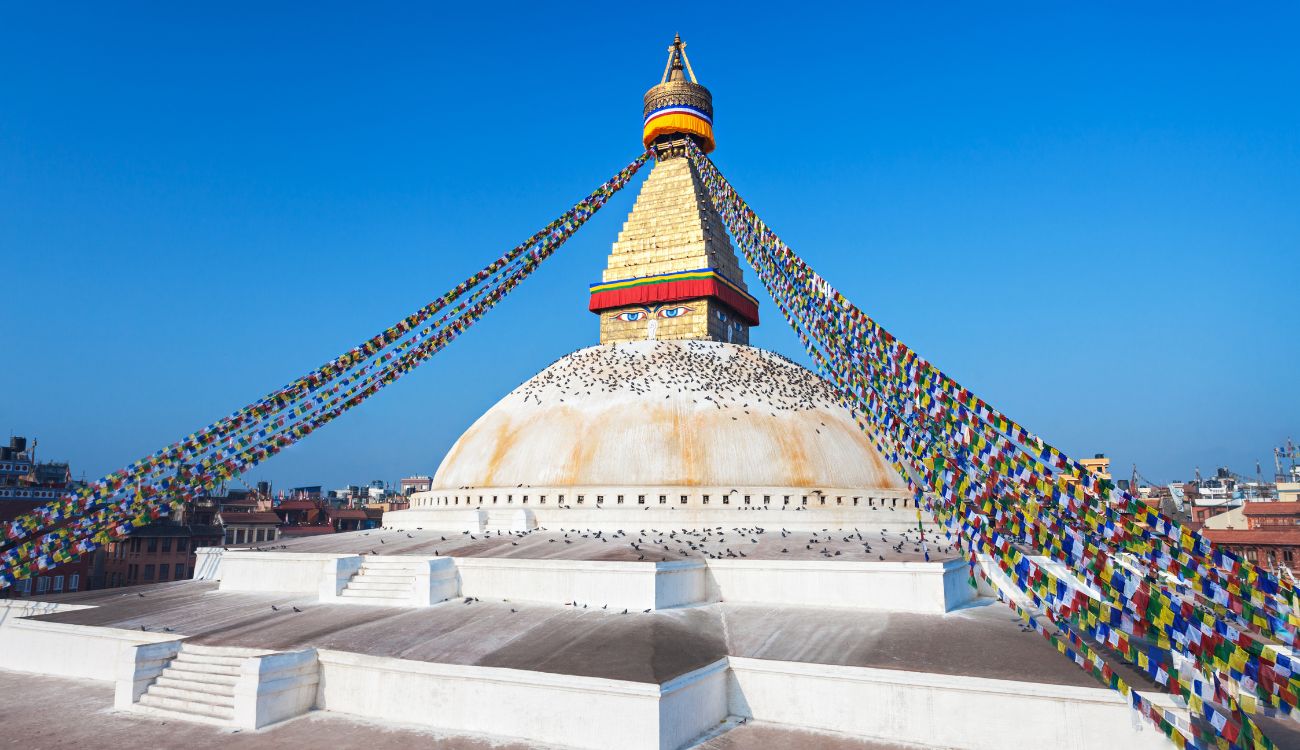
It is believed that each round generates positive energy while burning your negative karma. Cool right?
If you look closely, you will find that the prayer wheels are actually scribed with Buddhist mantras. The main mantra is “Om Mani Padme Hum,” which roughly means “the jewel in the lotus” and represents compassion.
The atmosphere here is completely different from Pashupatinath as it’s much more calmer with the sounds of murmured mantras and prayer wheels clicking.
Apart from that, during butter lamp time (usually evening, but sometimes afternoon), hundreds of small oil lamps get lit around the stupa, creating this magical glow.
1:00 PM – 2:00 PM: Lunch and Monastery Exploration
Around 1 PM, we break for lunch. The area around Boudhanath is packed with good food options. We usually recommend rooftop places where you can eat while looking at the stupa. The Tibetan restaurants here aren’t fusion or adapted for tourists. They’re the real deal because actual Tibetans run them.
Momos are the obvious choice. These Tibetan dumplings are everywhere in Kathmandu, but the ones here taste different. More authentic. Thukpa (Tibetan noodle soup) works great if it’s a cooler day. Or try Newari food. Bara (lentil pancake) or chatamari (which locals call Nepali pizza) are solid picks. Wash it down with butter tea if you’re feeling adventurous. It’s salty, not sweet, and takes some getting used to.
After eating, we explore the monasteries ringing the stupa. There are over 50 gompas here, each representing different schools of Tibetan Buddhism. Some are quiet meditation spaces. Others buzz with activity during prayer times.
Most monasteries welcome respectful visitors. All you need to do is take your shoes off and don’t touch religious objects without asking. When you show some respect, some monks are even happy to chat about Buddhism, explain things, and answer questions.
We can’t tell you the number of conversations we had with monks that got way deeper into philosophy than we expected.
2:00 PM – 3:00 PM: Drive to Swayambhunath Monkey Temple
Around 2 PM, we proceed over to Swayambhunath. The drive takes about 20 minutes and covers maybe 12 kilometres.
As we approach, you’ll spot Swayambhunath from a distance. It sits on top of a hill, visible from most of the valley.
3:00 PM – 4:00 PM: Swayambhunath Climb and Exploration
Swayambhunath is where it gets real. The eastern entrance has 365 stone steps leading up the hillside. One step for each day of the year, supposedly. The climb takes 15-20 minutes at a moderate pace. If stairs aren’t your thing, vehicles can access the site from the western entrance.
But honestly, climbing the stairs is half the experience. You pass through many Buddha statues, small shrines and stone carvings.
And yeah, monkeys own this hill. They’re bold, curious, and surprisingly good at snatching stuff from tourists. So it’s a good idea to keep your sunglasses and food secure.
As per the legend, they’re sacred (something about lice from the bodhisattva Manjushree’s hair transforming into monkeys), but they’re also opportunistic thieves.
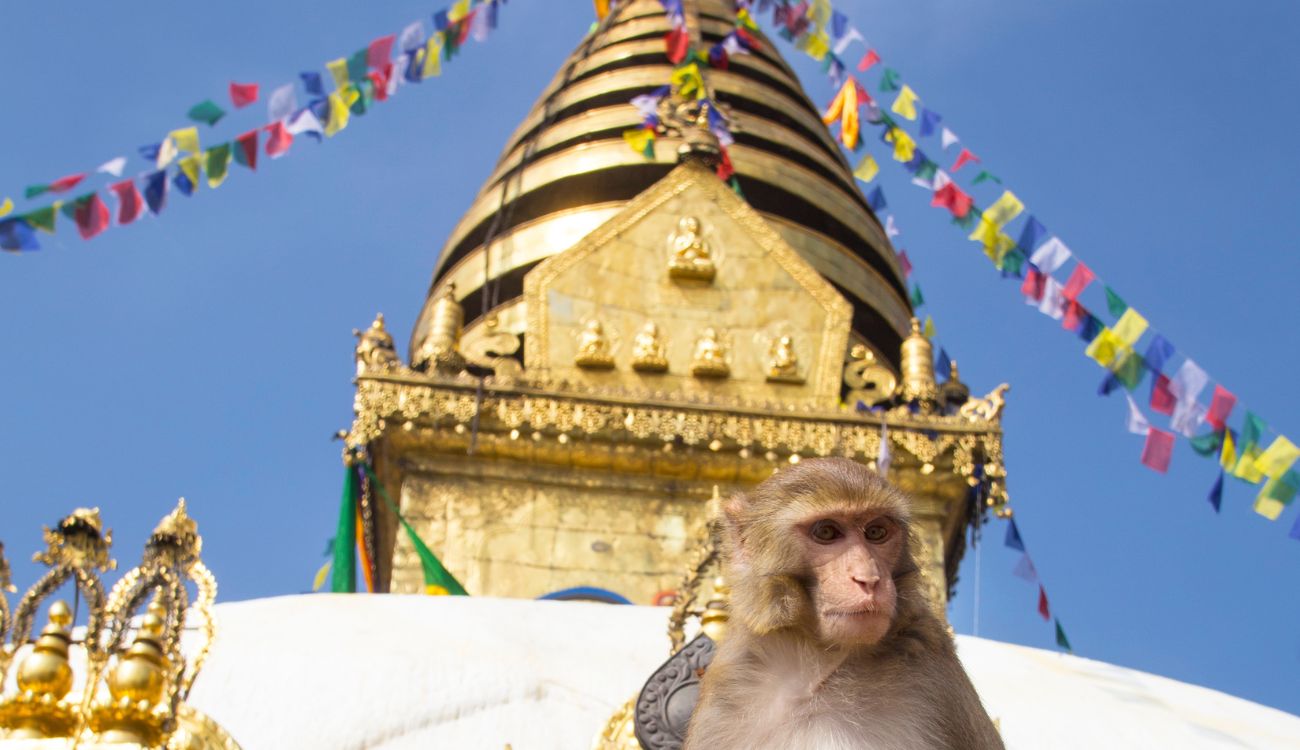
Reaching the top, the stupa dominates the platform. Those all-seeing Buddha eyes painted on the harmika (the square structure above the white dome) gaze in all four directions.
The nose between the eyes is actually the Nepali number one, representing unity. The whole structure is loaded with symbolism. The white dome represents the world. The 13 tiers above represent the stages toward enlightenment.
But Swayambhunath’s real uniqueness is the Hindu-Buddhist fusion. Hindu temples sit right next to Buddhist stupas. Both religions claim the site as sacred. Both worship here. You’ll see Hindu sadhus and Buddhist monks, Hindu families and Buddhist pilgrims, all sharing the same space peacefully.
The other great thing about this place is the view. From this one place, you can see the entire Kathmandu Valley. If you aren’t in a hurry, the evening view of the whole valley is absolutely worth it.
4:00 PM – 5:00 PM: Descent and Return to Thamel
Around 4 PM, we head down. The descent is easier on the knees. At the bottom, small shops sell religious items, souvenirs, and snacks. Our driver will drop you back to Thamel, which takes about 20 minutes.
By 5 PM, you’re back at your hotel. The day comes full circle. We started in Thamel’s tourist bubble, experienced the ancient monuments, witnessed life and death ceremonies, circumambulated ancient stupas, and climbed a hilltop sanctuary.
It basically means you compressed weeks of cultural experiences into one very full day.
Cost Includes
- Professional and well-trained English-speaking tour guide for the entire day
- Comfortable private transportation in Kathmandu.
- Hotel Pick-up and drop-off service in Thamel.
- Mineral water during the tour
- Temple and cultural site orientation and guided cultural walks
- Photography assistance and cultural storytelling throughout the day
- Government taxes and service charges
Cost Excludes
- Personal meals and drinks during the tour
- Entrance fees to the cultural sites
- Tips for guide and driver (optional but appreciated)
- Any activities not mentioned in the itinerary
Key Attractions and Why We Choose This Route
Now you might be wondering why these four sites? Why not throw in a couple more? The answer is pretty simple. These four give you the complete picture without turning the day into a forced march.
Basantapur Durbar Square
We start at Basantapur because it’s the foundation for understanding everything else. This square was the political, cultural, and spiritual center during the Malla period (12th-18th centuries). Not just where kings lived, but where Kathmandu’s entire identity got forged.
The architecture here influenced temple design across Nepal and into Tibet. Those pagoda-style roofs with multiple tiers? That started here.
The Newari craftsmen who built these structures were basically the rock stars of early Nepali architecture. Every window is different. Every door frame tells a different story through its imagery.
But Basantapur isn’t a museum. It’s alive. Locals still worship at these temples daily. The Living Goddess tradition continues.
As a matter of fact, craftsmen still work in the same family shops their great-grandparents occupied. During festivals, the square becomes the center of city-wide celebrations. This is living heritage, not preserved history.
Pashupatinath Temple
You can’t grasp Nepal’s true spiritual face without understanding Hinduism’s central role, and Pashupatinath is where that understanding happens. This temple ranks among the four most sacred Shiva pilgrimage sites in South Asia.
What makes Pashupatinath essential is its honesty about life’s biggest questions. The cremation ghats don’t hide death or sanitise it. Life and death are part of the same cycle. The Bagmati River, flowing past, carries both physical ashes and spiritual significance as it journeys toward the Ganges.
The architecture is also exceptional. The main pagoda temple with its golden roof and silver doors represents centuries of Nepali architectural excellence. The 518 smaller temples scattered across the complex show how religious sites evolve organically over time, not according to master plans.
Boudhanath Stupa
After Pashupatinath’s intensity, Boudhanath offers a different spiritual frequency. This is the most significant Tibetan Buddhist site outside Tibet itself. Back in 1959, thousands of refugees settled around this ancient stupa.
What makes Boudhanath special is its authenticity. This isn’t Buddhism packaged for tourists. This is where Tibetan monks study, where refugee communities maintain their cultural identity, where ancient practices continue without dilution.
The kora circumambulation, the monastery rituals, the butter lamps – these happen daily whether tourists show up or not.
The stupa’s architecture is also deeply symbolic. Every element means something. The mandala base represents the cosmic universe. The white dome symbolises the path to enlightenment.
Additionally, the 13 tiers above represent the 13 stages toward nirvana. Those all-seeing Buddha eyes painted on four sides represent wisdom and compassion gazing in all directions. It’s architecture as theology.
Swayambhunath
We end at Swayambhunath for good reason. This site is over 2,000 years old, making it one of Nepal’s most ancient religious monuments. But age isn’t what makes it essential. It’s the complete integration of Hindu and Buddhist traditions.
Both religions claim Swayambhunath as sacred. Both worship here. Hindu temples sit beside Buddhist stupas without conflict. This fusion reflects Nepal’s unique religious harmony, where boundaries are fluid, not rigid. Unlike many places where religions are segregated or in tension, Nepal has centuries of religious coexistence. Swayambhunath literally shows you that spirit.
The hilltop location also provides a literal perspective. After a day of understanding specific sites and rituals, climbing to Swayambhunath’s summit lets you see the entire valley. You get geographic context for everything you experience.
Furthermore, the Himalayan peaks on clear days remind you that this valley sits in the shadow of the world’s highest mountains.
Best Time to Visit Kathmandu (Based on Local Festivals)
Since it’s a cultural tour, timing it around the festival makes perfect sense as it transforms your experience from great to unforgettable.
However, our Kathmandu city has festivals nearly every month, so let’s break down which might actually be the best.
The Best Option: September (Indra Jatra)
If someone forced me to pick one month, it’s September for Indra Jatra. This eight-day festival happens right in Basantapur Durbar Square, which is already on our route. The timing couldn’t be better.
Indra Jatra honours the god of rain and the king of heaven. During the festival, the Living Goddess Kumari’s chariot procession takes place through the old city streets. This is one of the rare times she appears publicly, riding in a wooden chariot pulled by dozens of devotees.
Traditional Lakhey dances happen throughout the festival. Performers wear demon masks and dance to traditional music that hasn’t changed in centuries. The giant Akash Bhairav mask gets unveiled at Hanuman Dhoka, and alcohol (considered blessed prasad) actually flows from its mouth for devotees to collect in their hands and drink. The energy is electric. Music everywhere. Crowds in traditional dress. Rituals are happening in every corner.
What makes Indra Jatra perfect for this tour is accessibility. Everything happens in public spaces you’re already visiting. No special permissions needed. No insider knowledge required. Just show up and you’re part of it.
Plus, the September weather in Kathmandu is ideal. The monsoon is ending, skies are clearing, temperatures hover around 20-25°C, and mountain views start becoming spectacular.
Strong Alternative: March/April (Holi and Spring Festivals)
Spring brings festivals that completely transform the city’s energy. Holi in March decorates the whole Kathmandu valley with colours.
However, Fair warning, visiting temples during the main celebration day is tricky because colored powder gets literally everywhere. If you’re planning the cultural tour during Holi, do it before the main day.
Besides that, spring weather is beautiful as well, with Rhododendrons blooming on hillsides.
The Buddhist Pick: May (Buddha Jayanti)
For those more interested in Buddhism, Buddha Jayanti in May is special. This festival celebrates Buddha’s birth, enlightenment, and death (all supposedly happened on the same full moon day). Major celebrations happen at Boudhanath and Swayambhunath – two sites already on our tour.
In fact, you will see thousands of butter lamps illuminating the stupas at dusk, and monks perform special pujas.
But May can get warm (25-30°C during the day), and it’s technically pre-monsoon season, so afternoon showers are possible. But the festival atmosphere compensates for occasional weather quirks.
The Winter Wildcard: February (Losar)
February brings Losar, the Tibetan New Year, celebrated around Boudhanath by the Tibetan refugee community. Traditional Cham dances (masked monastery dances) and special foods like kapse (fried sweet bread) are specialities of this time.
Additionally, winter is also when you get the clearest Himalayan views.
If mountain photography is your thing, winter mornings offer views you won’t get at other times. But temperatures can drop to 0°C at night, but days are usually sunny and pleasant, around 12-18°C.
As a matter of fact, some high-altitude trekking routes become inaccessible due to snow, but the Kathmandu Valley itself remains fully accessible and less crowded with tourists.
What to Avoid: Dashain’s Main Days
Dashain is Nepal’s biggest festival. Fifteen days of celebrating Goddess Durga’s victory over the demon Mahishasura. It’s culturally huge and fascinating. But here’s the reality: during the main days (especially the 9th, 10th, and 11th days), Kathmandu basically empties out.
Everyone returns to their ancestral villages. Shops close. Restaurants shut down.
The UNESCO sites technically stay open, but everything supporting tourism – the cafés, the shops, the guides – many take time off.
If you’re here during Dashain’s peak, you can still do the tour, but the city feels like a ghost town. That vibrant street life that makes Kathmandu special? Gone temporarily. The first few days or the last few days of Dashain work fine because the city’s still functioning.
Packing List for the Tour
Packing for a one-day cultural tour seems straightforward until you realise you’re dealing with temples that require bare feet, potential monkey encounters, religious sites with dress codes, and weather that can shift from warm sun to sudden rain in about 30 minutes.
Clothing Essentials
Modest but comfortable layers will work best as temples have dress codes, but you’re also walking several kilometres throughout the day. Here’s what works:
- Long pants or a long skirt that covers your knees.
- A shirt that covers your shoulders.
- A lightweight scarf or shawl
- Comfortable walking shoes that you can slip on and off easily.
- Clean socks if you’re wearing closed shoes
Weather Protection
Kathmandu’s weather can surprise you. Pack these just in case:
- A compact umbrella or light rain jacket.
- Sunglasses and a hat.
- Sunscreen. SPF 30 minimum
Practical Gear
- A small daypack or crossbody bag
- Cash in Nepali Rupees
- A reusable water bottle
- Your phone or camera with backup batteries
- Hand sanitiser and wet wipes.
- A small amount of tissue paper
Optional But Useful
- Binoculars
- A small flashlight
What NOT to Bring
- Large backpacks or travel bags
- Expensive jewelry
- Drones. They’re banned at most heritage sites
- Inappropriate clothing, like shorts, short skirts, tank tops, or anything with offensive graphics.
Special Considerations for Different Seasons
Winter (December-February): Add a warm fleece or light jacket for early morning.
Monsoon (June-August): A good rain jacket is essential, not optional. Pack an extra shirt in a waterproof bag in case you get soaked. Closed-toe shoes are better than sandals during the monsoon because the streets get muddy.
One last thing: pack light. You’re carrying everything all day. If you’re debating whether to bring something, leave it at your hotel.
Permits
Good news: permits for the Kathmandu cultural tour are straightforward. Unlike trekking permits that require applications, processing time, and multiple documents, cultural site permits are basically entry tickets you buy at the gate. Let me break down what you actually need.
Entry Permits for Heritage Sites
Each UNESCO World Heritage Site on this tour charges an entrance fee. These aren’t technically “permits” in the bureaucratic sense, just admission tickets. But you need them to enter, so here’s the breakdown:
Basantapur Durbar Square: Foreigners pay NPR 1,000 (about $7.50 USD). SAARC nationals (India, Bangladesh, Pakistan, etc.) pay NPR 300. You get a ticket at the main entrance checkpoint. Keep this ticket because there are multiple entrances to the square and guards will check randomly.
Pashupatinath Temple: Foreigners pay NPR 1,000. SAARC nationals pay NPR 300. The ticket booth is at the main eastern entrance. This fee gives you access to the entire complex, including all the smaller temples and the cremation ghats viewing area.
Boudhanath Stupa: Foreigners pay NPR 400. SAARC nationals pay NPR 100. There are ticket counters at the main entrances. Once you’re on the platform around the stupa, nobody checks tickets again, but you need one to get in initially.
Swayambhunath: Foreigners pay NPR 200. SAARC nationals pay NPR 50. You pay at a booth near the base of the steps (or at the vehicle entrance if you drive up from the back). This ticket covers the entire hilltop complex.
Total cost for foreigners: NPR 2,600 (about $19.50 USD). For SAARC nationals: NPR 750 (about $5.60 USD).
Special Photography Permits
Here’s where it gets a bit complicated. Personal photography (phones, compact cameras) is generally allowed at all four sites without additional permits. You can take photos for personal use without issues.
Professional photography or videography (DSLR cameras with professional lenses, video equipment, tripods) requires special permits at most heritage sites. These permits can cost NPR 500-2,000 depending on the site and equipment. Drones are basically banned at all heritage sites. Don’t even think about it.
For the one-day cultural tour, most participants use phones or regular cameras. You won’t need special photography permits. But if you’re planning to bring serious camera gear or are shooting for commercial purposes, you need to arrange permits in advance through the Department of Archaeology or through a registered tour company.
What You Actually Need to Bring
- Your passport or a copy of your passport. Some entry points check ID to verify you’re actually a foreigner (and should pay foreigner rates). A clear photo or photocopy on your phone usually works, but having your actual passport is better.
- Cash if you’re buying tickets independently. Heritage site ticket counters don’t accept cards. They want cash in Nepali Rupees.
That’s it. No applications, no processing time, no bureaucratic hassle. Show up, pay (or have your tour operator pay), and enter.
Local Foods to Try during Kathmandu City Tour
One of the best parts about the Kathmandu cultural tour is the food. Not the fancy tourist restaurant stuff, but the real deal that locals actually eat. We build in a lunch break at Boudhanath, and that’s your chance to try some authentic flavours. Let me walk you through what’s worth ordering.
Must-Try Dishes
Momos are the obvious starting point. These Tibetan-style dumplings are everywhere in Kathmandu, but the ones around Boudhanath hit different because they’re made by actual Tibetan refugees using recipes brought from Tibet. They come steamed or fried (kothey momo). The steamed ones are healthier. The fried ones are crispier and, let’s be honest, more delicious.
Thukpa is Tibetan noodle soup, perfect if it’s a cooler day or you want something warming. The broth is hearty, usually made from bones simmered for hours. You get vegetables, noodles, and your choice of meat. It’s comfort food in a bowl. The egg thukpa (with a fried egg on top) is my personal favourite.
Dal Bhat is Nepal’s national dish and the most common meal for locals. It’s rice (bhat) with lentil soup (dal), plus sides of vegetable curry, pickles (achar), and sometimes a bit of meat. Sounds simple. But when it’s done well, especially with fresh ingredients and proper spices, it’s incredible. Most places offer unlimited refills on dal bhat. “Dal bhat power, 24 hour” is a local saying for a reason.
Newari food deserves its own category. The Newar community invented some of Nepal’s most distinctive dishes. Try chatamari (often called Nepali pizza), which is a rice crepe topped with minced meat, eggs, and vegetables. It’s nothing like Italian pizza despite the nickname. Bara is another Newari dish: lentil pancakes that are crispy outside and soft inside, usually topped with an egg or minced meat.
Choila is spiced grilled meat (usually buffalo or chicken) served cold with beaten rice (chiura). The meat is marinated in spices, grilled, and then mixed with raw onions, ginger, and more spices. It’s intensely flavorful. This is bar food, basically. Goes great with local alcohol if that’s your thing.
Tibetan Specialities Around Boudhanath
Since we’re having lunch near Boudhanath, you’ll have access to authentic Tibetan options:
Thenthuk is a hand-pulled noodle soup. The noodles are made fresh, stretched by hand (it’s fun to watch if you catch the cooks preparing it). The soup is similar to thukpa, but the hand-pulled noodles have a different texture.
Tingmo are Tibetan steamed buns, soft and slightly sweet. They’re perfect for dipping in soup or curry. Some places serve them with dips or alongside other dishes.
Butter tea (po cha) is an acquired taste. It’s made with tea, yak butter, and salt. Yes, salty tea. It tastes nothing like regular tea. Some people love it. Most tourists hate it the first time but warm up to it by the second or third try. It’s traditional, especially in Tibetan culture, and worth trying at least once.
Dietary Restrictions
Vegetarian: Nepal is one of the easiest countries for vegetarians. Most restaurants have extensive veg options. Just say “vegetarian” or “shakahari” (vegetarian in Nepali).
Vegan: Trickier but doable. Many curries use ghee (clarified butter). You’ll need to specify “no dairy” or “no ghee.” Dal bhat can usually be made vegan.
Gluten-free: Harder. Most Nepali food involves rice (which is fine), but momos and breads obviously contain wheat. Stick to dal bhat and rice-based dishes.
Food Safety Tips
From our years of experience, here’s what actually matters for avoiding stomach issues:
- Eat where locals eat.
- Avoid raw vegetables unless you’re at a high-end place
- Drink bottled water only
- Watch how food is prepared
- Trust your gut (pun intended). If something looks or smells off, don’t eat it. You’re on vacation, not a survival show.
Cultural Etiquettes to Show
Knowing cultural etiquette in Kathmandu isn’t complicated, but getting it wrong can turn a respectful visit into an uncomfortable situation fast. After years of guiding, we’ve seen well-meaning tourists accidentally offend locals or get yelled at by temple guards for simple mistakes. So here are a few things to keep in mind:
- Always ask before photographing people, especially during religious ceremonies.
- Never photograph the Living Goddess Kumari at Basantapur.
- Main temple areas often prohibit photography
- Cremation ceremonies at Pashupatinath are a sensitive situation, so don’t take photos
- Remove your hat when entering religious buildings.
- Don’t point your feet toward religious statues, shrines, or people.
- Walk clockwise around stupas, temples, and religious monuments.
- Don’t touch religious statues or altars unless you’re making an offering under someone’s guidance.
Interacting with Locals
“Namaste” is your universal greeting. Put your hands together in front of your chest and say “namaste” (which roughly means “the divine in me greets the divine in you”). It works for everyone: temple priests, shopkeepers, random people on the street. Most Nepalis will appreciate the effort, even if your pronunciation is off.
Tipping isn’t mandatory but appreciated. For guides, NPR 500-1,000 per day is standard for good service. For taxi drivers, rounding up is fine. At restaurants, leaving 10% is generous but not expected at local joints.
Accept things with your right hand or both hands. The left hand is considered unclean (it’s the hand traditionally used for bathroom hygiene). When receiving offerings, gifts, or even change from a shopkeeper, use your right hand.
What To Do During Rituals and Ceremonies
If you’re lucky enough to witness ceremonies (like the Pashupatinath aarti), follow these guidelines:
Observe quietly. Talking loudly, laughing, or treating it like entertainment is disrespectful.
Don’t block worshippers. If you’re watching a ceremony, stay to the side. Don’t stand directly in front of people trying to pray or make offerings.
Accept offerings if given. During some ceremonies, priests distribute prasad (blessed food) or tika (red powder marks on foreheads). If offered to you, accept graciously with your right hand, even if you don’t want to eat it or wear it.
Follow the crowd. If you’re unsure what to do during a ceremony, watch what locals do and follow their lead. You won’t get everything right, but making an effort shows respect.
Optional Add-Ons
- City tour to Patan Durbar Square
- Tour to Bhaktapur Durbar Square
- Momo making session
- Thangka making session
- One-on-one session with the local historian
- Authentic puja by the hands of a local priest.
What Makes This Kathmandu Cultural Tour Special
These four sites balance each other perfectly. You experience both major religions (Hinduism and Buddhism), see different architectural styles (medieval palaces, pagoda temples, massive stupas), encounter different spiritual practices (cremation rituals, circumambulation, prayer ceremonies) and explore different neighbourhoods (medieval city center, temple complex, Tibetan refugee community, hilltop sanctuary).
The route also makes geographic sense. We move in a logical arc across the valley with minimal backtracking. The mix of walking and private rides keeps things interesting without exhausting you. Starting at Basantapur grounds, you will learn about Kathmandu’s history before moving to the more spiritually specific sites.
Could we add more? Sure. Kathmandu has seven UNESCO World Heritage Sites in total. But if you ask us, combining all seven into one day creates a rushed checkbox experience.


